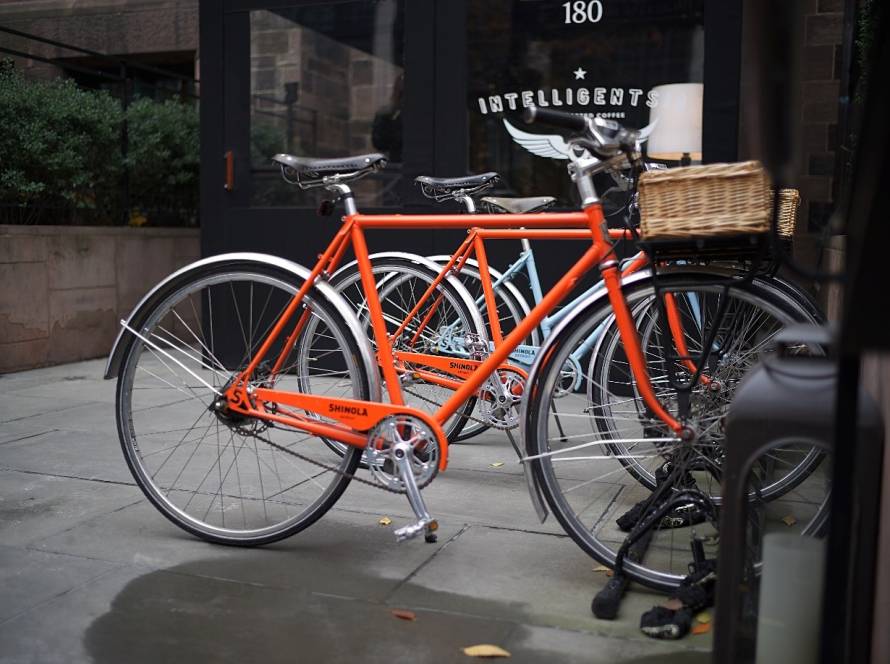It’s important to know the speed limit for the road you are on, this is to not only ensure your and everyone else’s safety and to avoid breaking the law and facing a fine, but also so that you don’t impede the flow of traffic. However, you don’t automatically just know the speeds and learning how to check the speed limits on roads is a key part of getting your licence.
It’s not only important for drivers to be aware of the speed limit, but other road users as well, including pedestrians, to help them assess if it is safe to cross the road in the absence of a zebra crossing.
Part of the reason speed is so dangerous is because the speed at which you are travelling doesn’t need to be excessive to be deadly. 10% of pedestrians or cyclists will die in a collision with a car travelling 30km/h; that number then shoots up to 80% if the car is going 50km/h.
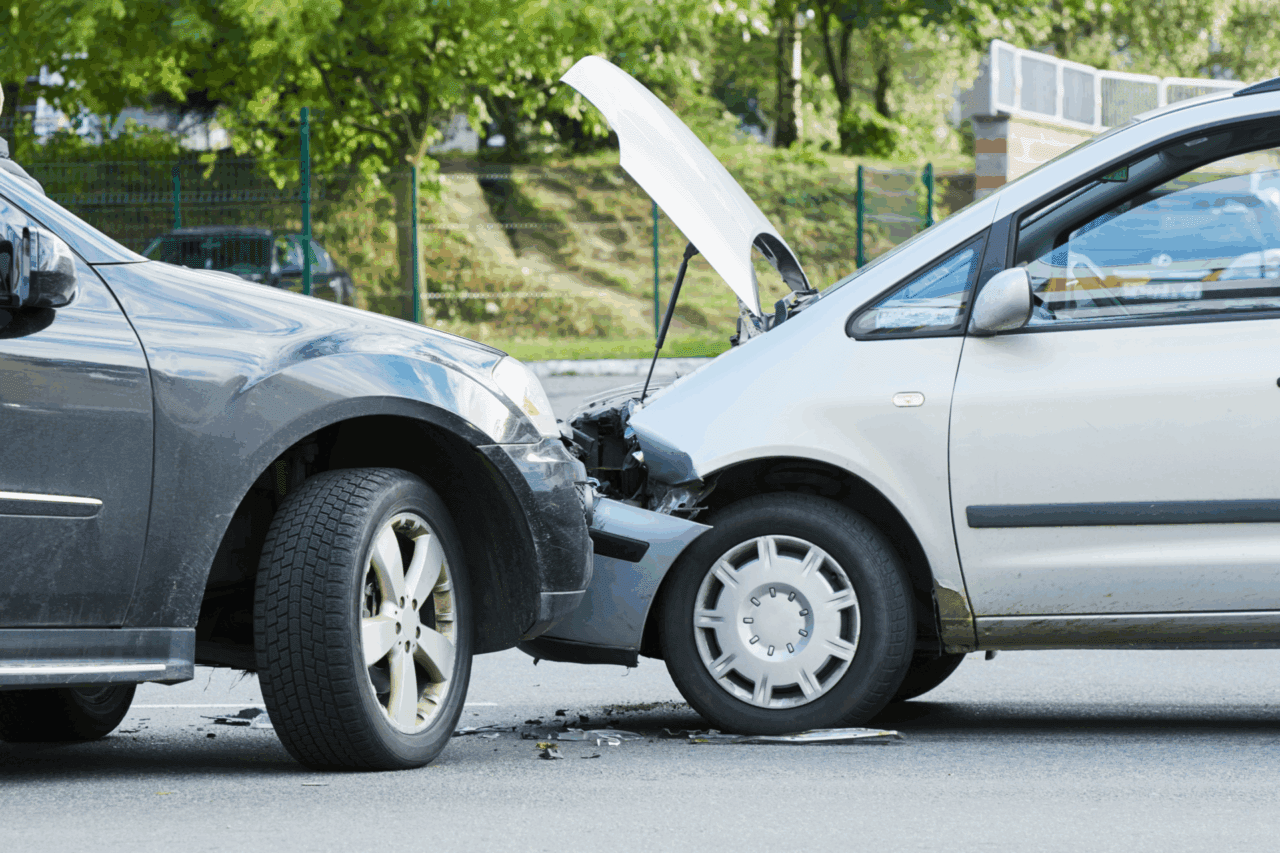
To put this into more perspective, speed was a contributing factor in over 44% of road deaths in NSW in 2023, that’s 151 people who are no longer with their loved ones.
In this blog, we will discuss how to check speed limits on roads, how they are determined, and why they’re important.
Why do I have to drive within a road’s speed limit?
Speed limits and speed cameras are in place to keep every road user safe. While they might seem arbitrary and at times annoying, they have been established to reduce risks while on the road.
Speeding contributed to 25%, or 1215, of NSW hospitalisations of people seriously injured from a road collision in 2023.
Not every road and location is suitable to exceed certain speeds; considerations like how winding or uneven a road may be, how congested, and the likelihood of the presence of pedestrians all require different speed conditions.
Further, predictability is a key factor for maintaining road safety. The use of blinkers to indicate when people intend to change lanes, abiding by stop signs, and giving way to those already in the roundabout are ways that the risk of collisions can be reduced because other drivers and road users know what to expect of the vehicles around them.
Speed is another one of these factors.
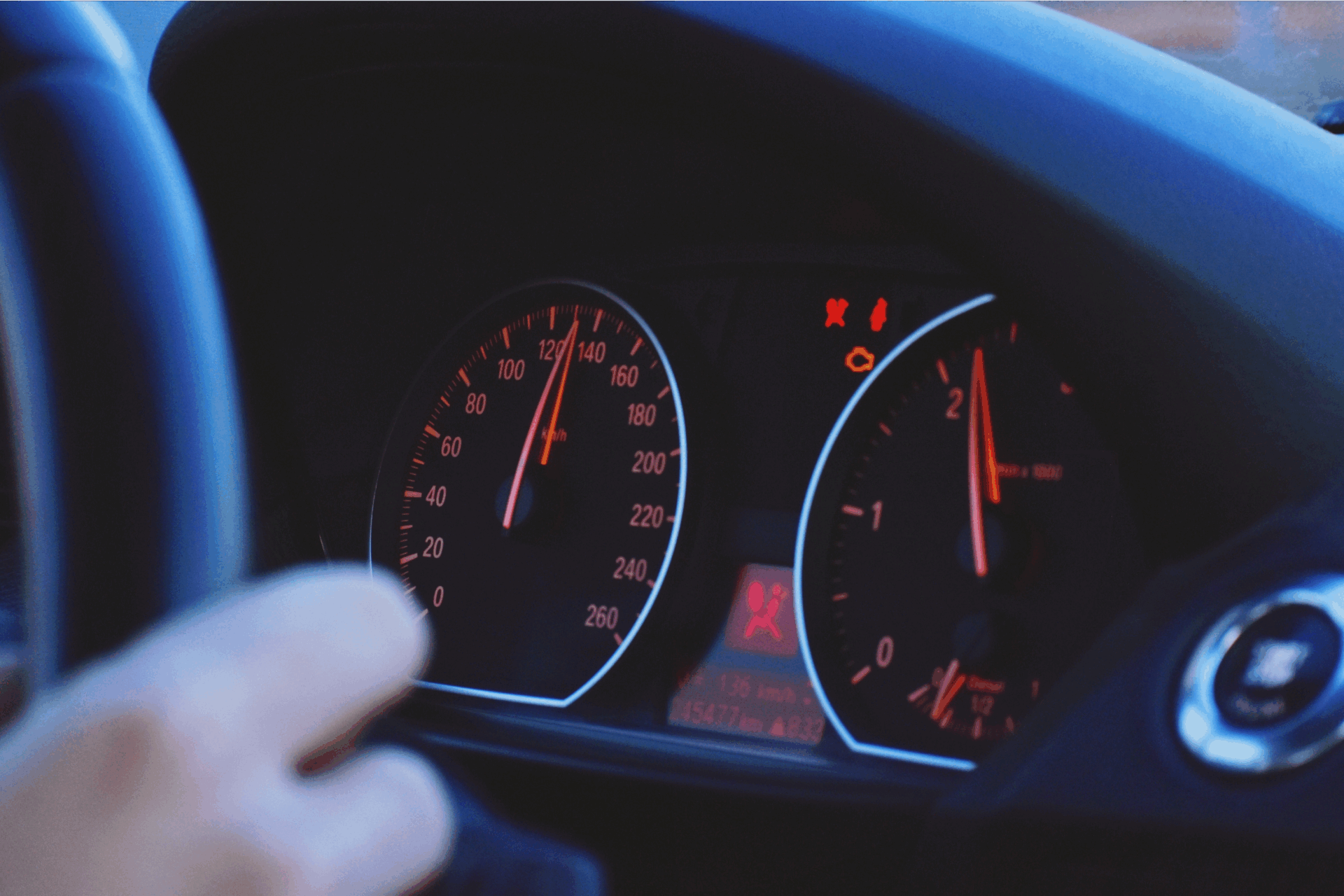
By you and other drivers following the speed limit, it can help prevent tailgating, unexpected vehicles sitting in blind spots, and even alert you to potential issues if you notice other drivers slowing down.
How to check the speed limit on a road
There are a few ways of how to check speed limits on roads, and while it is necessary to remain within the speed limit, and even below it as conditions require, it is just as necessary to stay safe while identifying the limit (which we will also cover).
Road signs
Speed signs 
These signs indicated the speed limit of the road following it. If the speed limit is increasing, you cannot accelerate until you have passed the sign; if the speed limit is decreasing, you must be at the lower speed limit before you begin to pass the sign.
While driving, you should always be scanning ahead as part of hazard perception and prevention; this will also allow you to spot speed signs indicating changes in speed.
Speed limits across Australia for standard conditions typically range from 50km/h to 100km/h; however, speed limits can be as low as 5km/h and up to 130km/h.
School Zones
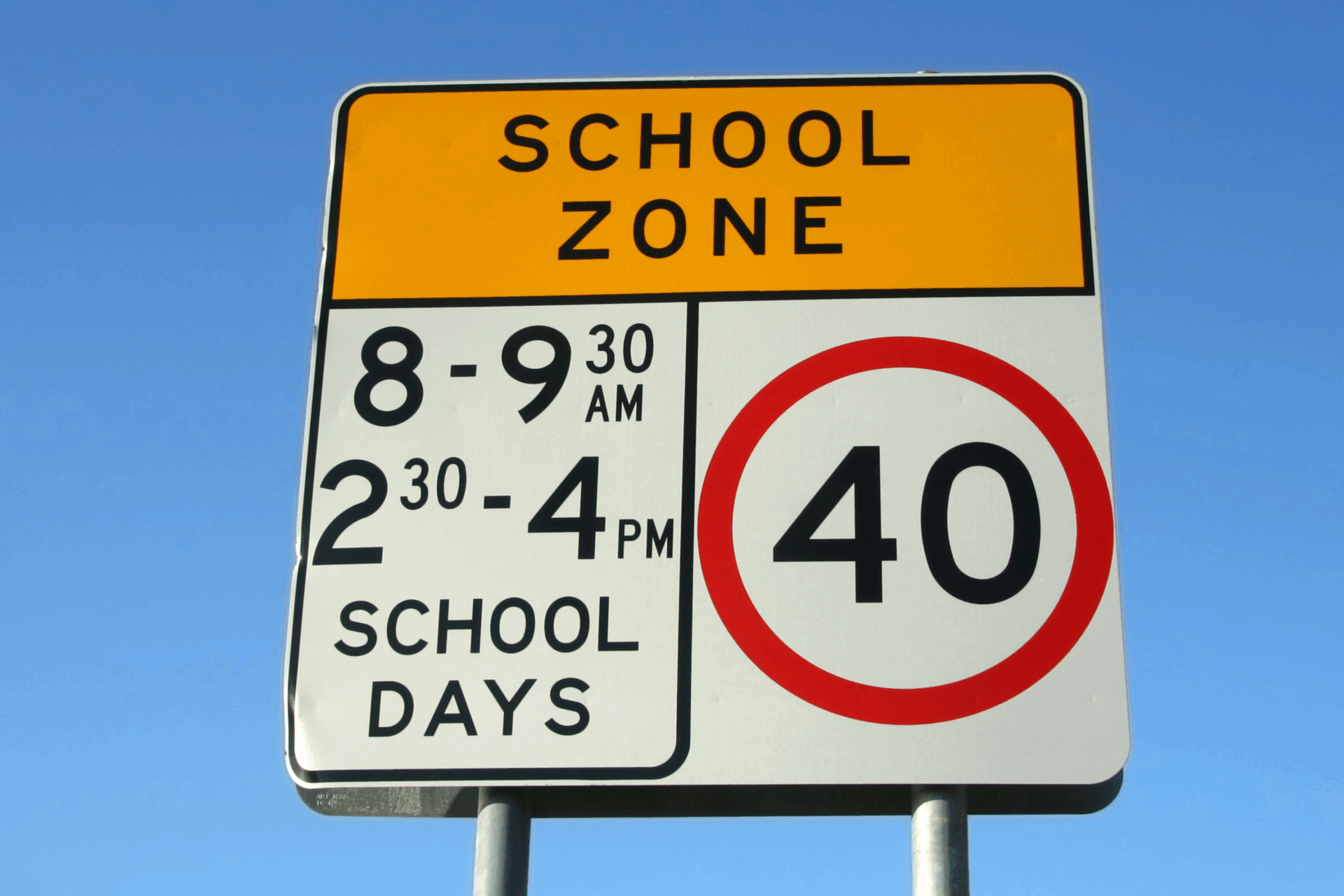 Schools Zones are roads that are adjacent to schools or where student pedestrians are expected to be. These speeds are to be followed on school days during the times outlined on the sign, often 8-9:30 am and 3-4 pm, and these zones are typically 40 km/h. The times and speed limit may change based on the school zone you are travelling through, so it’s best to always read the sign.
Schools Zones are roads that are adjacent to schools or where student pedestrians are expected to be. These speeds are to be followed on school days during the times outlined on the sign, often 8-9:30 am and 3-4 pm, and these zones are typically 40 km/h. The times and speed limit may change based on the school zone you are travelling through, so it’s best to always read the sign.
For South Australia, school zone speed limits are active every time a child, defined as someone under 18 years old or in a school uniform, is present. This is regardless of if they are crossing the street, on a bike, or even just standing on the footpath.
Shared Zones 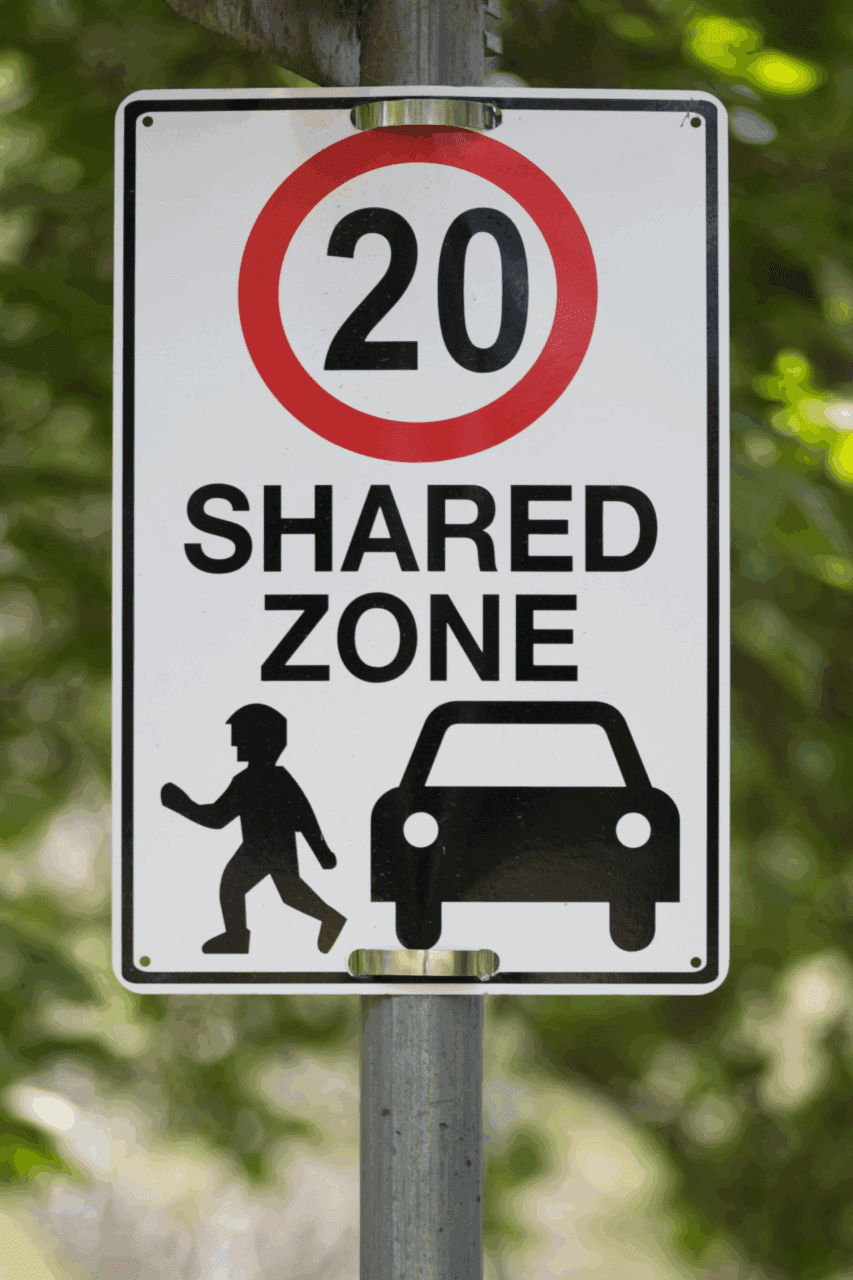
Like School Zones, Shared Zones require a lower speed limit due to a higher number of vulnerable road users, this includes spaces like car parks and busy shopping strips. These areas may have one set speed limit or a speed limit that changes based on the time of day or how busy the area currently is.
These spaces typically have speed limits between 5km/h and 40km/h.
Road Work Signs
 These are temporary signs placed on the side of roads when work is being conducted on or near the road that requires you to slow down. Typically, it will require gradual decreases in speed until you get to 40km/h, for example, if you are on a 100km/h road you might come across an 80km/h road work sign shortly followed by a 60km/h sign and then a 40km/h sign. These are legal speed limits that you must obey, even if you cannot see any workers or it’s a non-business hour, like the weekend.
These are temporary signs placed on the side of roads when work is being conducted on or near the road that requires you to slow down. Typically, it will require gradual decreases in speed until you get to 40km/h, for example, if you are on a 100km/h road you might come across an 80km/h road work sign shortly followed by a 60km/h sign and then a 40km/h sign. These are legal speed limits that you must obey, even if you cannot see any workers or it’s a non-business hour, like the weekend.
Advisory signs
While these ones are not legal speed limits, they tell you the safe speed to travel in specific areas, with the type of hazard being indicated. These signs are most commonly used for significant bends in the road, shown with a curved arrow, and for when a road is known for being slippery when wet, shown with a swerving car and the words “when wet”.
Variable Speed Limit Signs (VSLS)
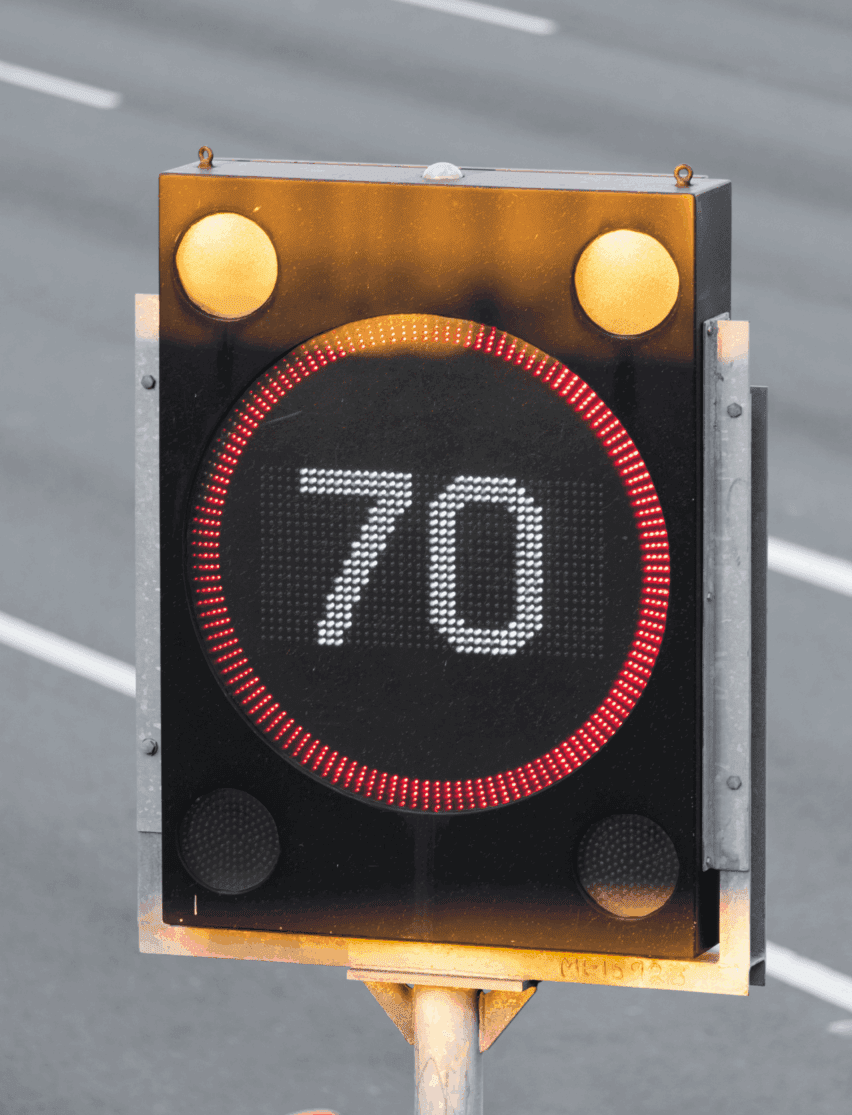 These are electronic speed limit signs that change based on the conditions or time. These can be found in school zones where they show the speed limit during school zone times, busy roads that have changing speed limits based on congestion, in shared or busy zones that may have a variable speed limit based on the time of day, or at dangerous crossings where a lower speed limit is triggered by vehicles approaching a crossing on a high traffic road.
These are electronic speed limit signs that change based on the conditions or time. These can be found in school zones where they show the speed limit during school zone times, busy roads that have changing speed limits based on congestion, in shared or busy zones that may have a variable speed limit based on the time of day, or at dangerous crossings where a lower speed limit is triggered by vehicles approaching a crossing on a high traffic road.
These signs may only be on/lit up when the conditions require, or they may change throughout the day to reflect the current speed limit.
Government websites and apps
If you are in an area that, for whatever reason, is missing speed signs, or you become uncertain of what the speed limit is, you can pull over or get a passenger to look it up. This includes apps like Speed Advisor for NSW, websites like Transport Victoria, or even the GPS in your car.
However, changes to the speed limit and updating those changes on digital platforms may not always occur at the same time, so these methods should only be used as a backup, and the limit of the physical signs must not be exceeded.
Are speed limits the same for all drivers?
For the most part, the speed limit is the same for all drivers; however, there are certain circumstances where certain licence types may be required to drive under the speed limit.
If you are a full licence holder driving a vehicle that does not require a special licence, then you are permitted to drive at the speed limit. If you are on a learner’s permit or probationary, heavy vehicle, or another form of specialty licence, you may have maximum travelling speeds that you cannot exceed. You are permitted to still use roads whose speed limits are higher than your maximum speed; however, you cannot exceed your maximum speed and must therefore travel under the speed limit.

You will be informed of these restrictions during the licensing process, and in some instances, the restrictions will be printed on your licence. If you are concerned that you have a restriction, it is best to check with the relevant licensing authority for your state or territory.
Are you ever allowed to exceed the speed limit?
If you are wondering if you are legally allowed to exceed the speed limit, the answer is no. There are only special circumstances for emergency vehicles that allows those drivers to surpass the speed limit. So, unless you are behind the wheel of a police car, ambulance, or fire truck, and skipped a section in training, you would already know if you were allowed to.
How are speed limits set?
Speed limits are set in NSW following predetermined guidelines, this begins with considering who the road users are for that road including pedestrians and vehicle types, the likely condition of the road and safety structures, what infrastructure is around, what the road is often used for, the indicated speed for the road design, the environmental impact, and community input.
You will most often notice a trend in the speed limit based on the environment around the road and the road itself.
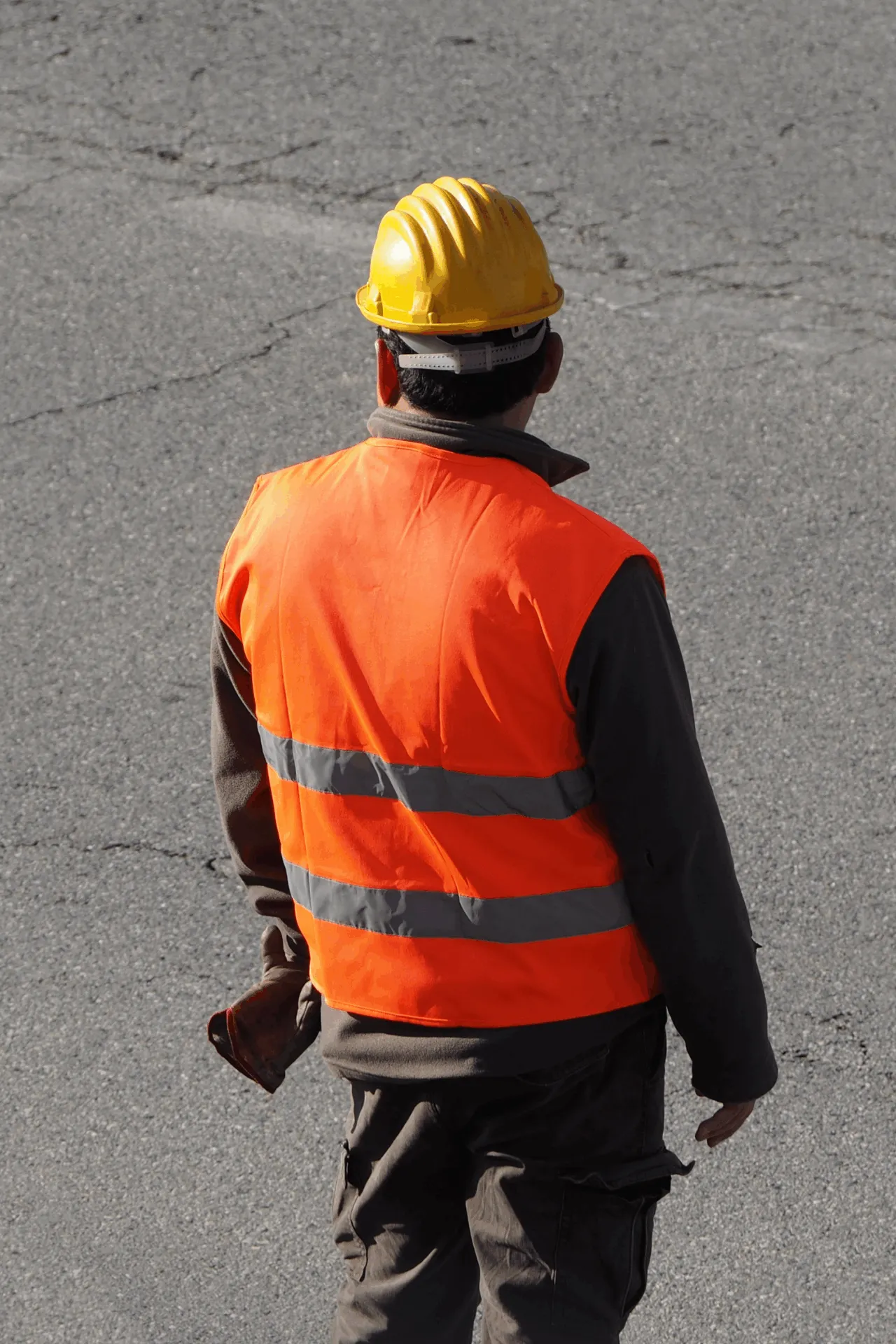
Typically, Shared Zones, areas where pedestrians have priority over vehicles such as parking lots, are 10km/h, while school zones and areas with high levels of local traffic tend to be between 30-40km/h, less busy but still built-up areas like suburbs are 50km/h, and rural roads and highways are 100km/h.
Learn more about staying safe on Australian roads
Speed limits, while seemingly tedious at times, are important features of ensuring our roads are safe for all users.
If you find yourself in a situation where you have been charged with a speeding offence, we offer an evidence-based Traffic Offender Intervention Program (TOIP). Our program is not about judgment but providing all our participants with the information and education they need to make the best choices they can on the road and create safer road users.
TOIP is available to be completed online, either in a virtual classroom over Zoom or as a self-paced program that you can stop and start and have access to over 32 days. We also offer a face-to-face option in some locations. Further, our course is NSW court-accredited and recognised by courts in WA and QLD.
We also offer a workplace program, Drive It Home (DIH), to help change attitudes and ensure that all workers are safe and that employers are ensuring they have met all their work health and safety obligations and highlight that employee safety is a priority.
If you would like more information or to book, please check out our TOIP page, our DIH page, or reach out to us.

